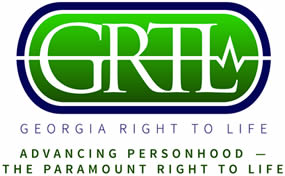 For years, Georgia Right to Life has held a no-support policy for the March of Dimes (MOD). One of the most frequent questions we are asked is if there is any new information on MOD, or is our boycott based on old information?
For years, Georgia Right to Life has held a no-support policy for the March of Dimes (MOD). One of the most frequent questions we are asked is if there is any new information on MOD, or is our boycott based on old information?
After some recent study, there is new information. However, it does not bode well for the March of Dimes.
Just to refresh you, the MOD boycott began in 1972, because they sponsored and pushed the technique of amniocentesis in order to diagnose handicapped children in the womb, and then 90% to 95% of them were killed. (At that rate, we will not have “Special Olympics” for very much longer.)
We also knew that Henry Foster, who served on the March of Dimes’ Medical Service Advisory committee, admitted doing nearly 700 abortions following the results of amniocentesis.
Amniocentesis is no longer an experimental technique – doctors seem to use this test on nearly every pregnant woman, so the reasons for the MOD boycott have slowly changed.
In 1995 the MOD sent records of all the grants they made for research in the previous two years to Rev. Robert Fleischmann, the national director of WELS Lutherans for Life, hoping that the boycott would be lifted. After they were evaluated, it was discovered that several projects apparently used fetal tissue from aborted babies.
Rev. Fleischmann’s requested that the MOD add an official policy that they would refuse grants for research projects involving the use of tissue from aborted babies – the MOD refused. The MOD lobbies Congress for federal funds (your tax dollars) to use human embryo stem cells in research. To be an organization that claims to have the best interest of children in mind, the MOD doesn’t seem to be protecting the interests of the unborn at all. The MOD is also involved with Preimplantation Genetic Diagnosis (PGD).
Before human embryos are implanted into the womb by in-vitro fertilization, they are first screened for genetic imperfections or diseases. The human embryos that don’t meet their standards are, instead, destroyed. During the March of Dimes 2002 Annual Clinical Genetics meeting, they taught a workshop on how to use PGD to identify more genetic
diseases. This is truly a “search and destroy” mission.
Another startling discovery is that the MOD is involved with Planned Parenthood. According to a letter that MOD sent to Tennessee Right to Life, MOD staff and volunteers participate in coalitions along with Planned Parenthood, and some MOD chapters give community grants to the pro-abortion group. In 2006, the MOD released their Global Report on Birth Defects, The Hidden Toll of Dying and Disabled Children. One of strategies it encourages is called “secondary prevention,” which “aims to reduce the number of children born with birth defects.”
Although rarely stated explicitly, one potential ‘treatment’ at this stage is frequently implied: abortion. We recognize that some of the things MOD has done are great, but their support of embryonic stem cell research, fetal tissue research, and abortion as an alternative to prenatal abnormalities is as anti-life as you can get.
There is an alternative to the March of Dimes. The Michael Fund is dedicated to intertwining scientific research for the prevention of genetic defects and the pro-life philosophy: Their website is www.michaelfund.org where you can access more information about what they do to help children in the womb and outside the womb.
There are many non-profit organizations such as the United Way and the Susan G. Komen foundation that donate to Planned Parenthood. If you ever want information on a more complete list of which non-profits support Planned Parenthood and the abortion industry, please visit Life Decisions International’s website www.fightpp.org. Life Decisions International does a great job of keeping an updated list on the various organizations that directly support the abortion industry.
